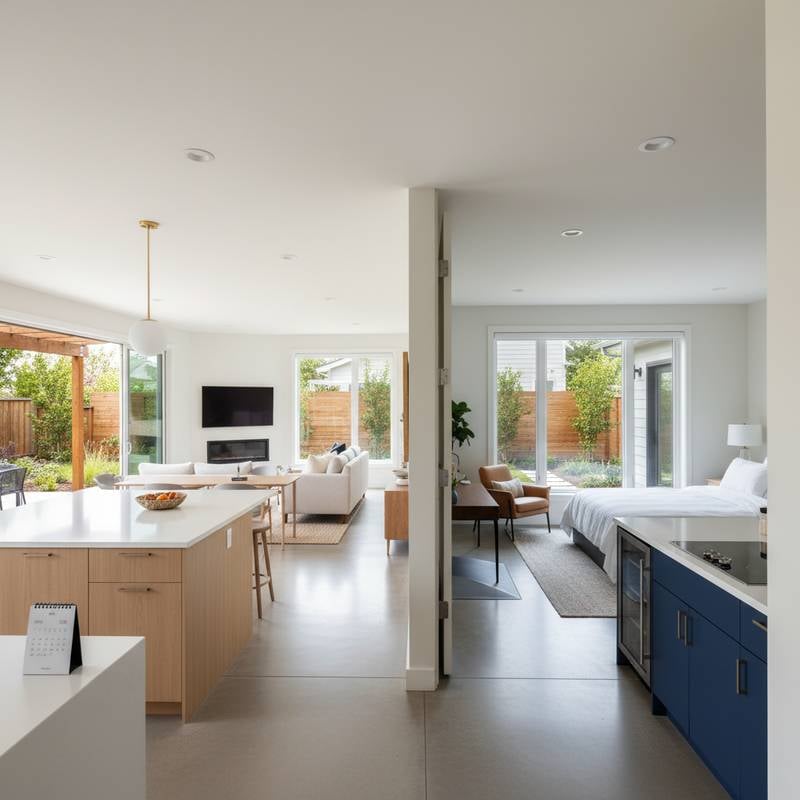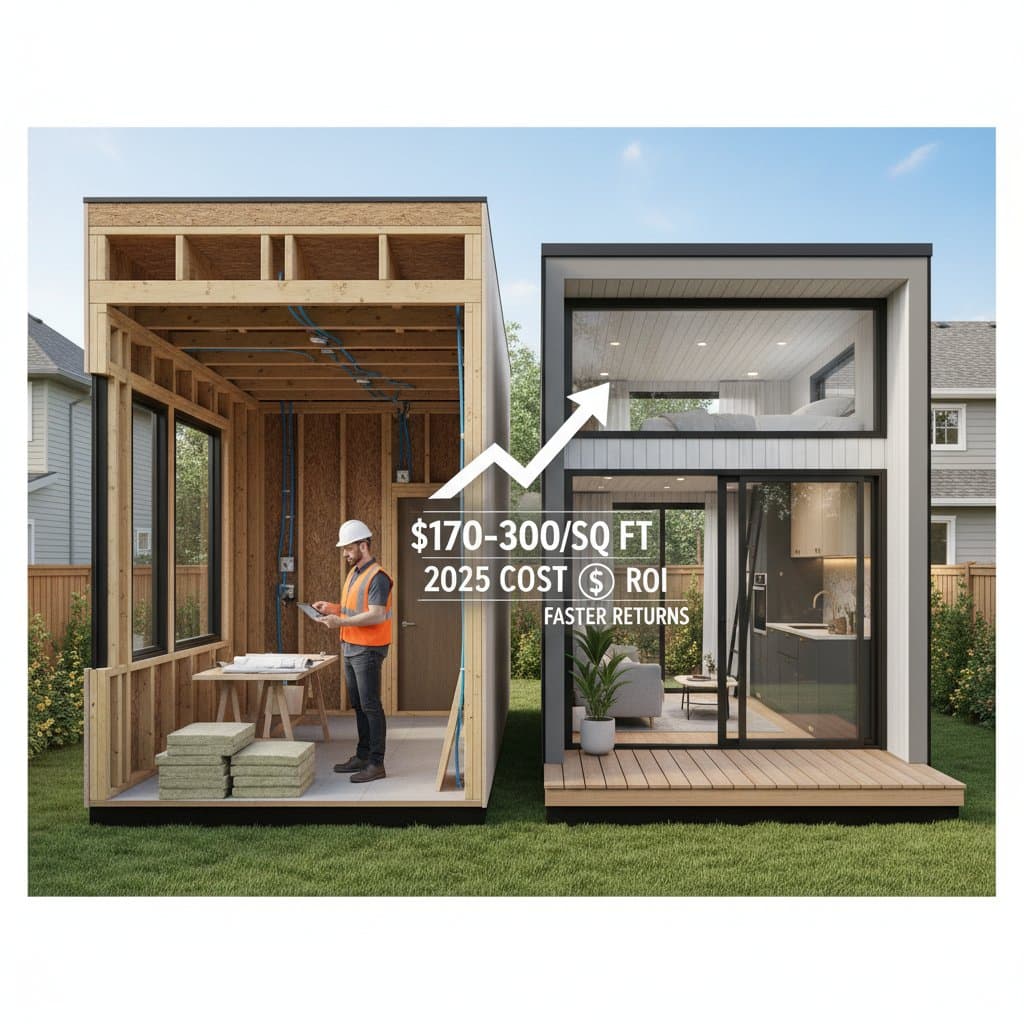- Inspection Point: Obtain trade-specific approvals before wall closures.
9. Insulation and Drywall Application
Place insulation meeting required R-value standards, then mount drywall sheets, tape joints, and apply compound. Sand surfaces to prepare for painting.
Key Milestone: Seal all walls and ceilings adequately for subsequent finishing layers.
10. Interior Finishing Touches
Apply paint, lay flooring, add trim, install cabinetry, and fit fixtures. Select durable, moisture-resistant options for kitchen and bathroom areas. Homeowners may manage painting and flooring installation to reduce expenses.
Key Milestone: Deliver a clean, operational interior with fully functional fixtures.
11. Exterior Completion and Site Integration
Apply siding, trim, and paint to harmonize with the primary home. Install gutters to channel water from the foundation base. Conclude with pathways, exterior lighting, and simple landscaping features.
Key Milestone: Ensure the exterior complements the property aesthetic while managing drainage effectively.
Essential Quality Assurance and Issue Resolution
Frequent Challenges
- Foundation Cracks: Often result from inadequate drainage or insufficient footing depth; address through proper grading and drainage systems.
- Water Penetration: Protect joints in roofs and walls with seals and flashing at material transitions.
- Electrical Problems: Investigate tripped outlets or flickering lights via a licensed electrician.
- Wall Moisture Issues: Confirm correct placement of vapor barriers and insulation materials.
Straightforward Remedies
- Adjust door hinges and latches for seamless function.
- Apply flexible caulk to minor gaps in trim or siding.
- Swap out any humidity-affected baseboards after environmental stabilization.
Professional Intervention Thresholds
Engage licensed experts for:
- Foundation shifts or structural instability.
- Electrical panel enhancements or full rewiring.
- Concealed plumbing leaks within walls or slabs.
- Comprehensive roof replacements or flashing overhauls.
- New gas line setups.
Estimated expenses include:
- Electrical upgrades: $2,000 to $6,000.
- Plumbing rough-ins: $4,000 to $10,000.
- Roof replacements: $8,000 to $15,000.
- Complete design and construction: $300 to $500 per square foot.
For contractor selection:
- Confirm valid licensing and insurance coverage.
- Request client references and visual project documentation.
- Obtain itemized written bids with defined project scopes.
- Steer clear of cash-based transactions.
Detailed Cost Analysis by ADU Category
| ADU Type | Typical Size (sq ft) | Cost Range | Difficulty | Typical Timeframe |
|---|---|---|---|---|
| Detached Backyard Cottage | 400 - 1,000 | $250,000 - $400,000 | Advanced | 6 - 9 months |
| Garage Conversion | 300 - 600 | $120,000 - $200,000 | Moderate | 4 - 6 months |
| Attached Addition | 400 - 800 | $180,000 - $320,000 | Advanced | 6 - 8 months |
| Basement ADU | 500 - 900 | $150,000 - $300,000 | Advanced | 5 - 8 months |
Local labor variations and site specifics affect pricing. Urban settings often incur higher fees for permits and utilities.
Expert Recommendations for Optimal Results
- Cluster plumbing elements to minimize piping lengths.
- Incorporate energy-efficient windows and insulation for sustained savings.
- Select pre-fabricated finishes to accelerate timelines.
- Book inspections promptly to prevent scheduling bottlenecks.
- Maintain a project journal tracking advancements, expenditures, and photographic evidence.
These strategies support budget adherence and quality oversight from inception to completion.
Frequently Asked Questions
What approach minimizes ADU construction costs? Garage conversions or compact detached studios generally offer the lowest price points.
Does an ADU require its own utility metering? Certain municipalities mandate separate meters; consult your utility company during the planning phase.
Is ADU rental permitted? Long-term leasing receives broad approval, though short-term options face potential limitations.
What financing options exist for ADUs? Home equity loans, renovation financing, and construction loans provide viable paths.
How does an ADU affect property valuation? A quality ADU typically boosts value by expanding usable space and generating rental revenue.
Advancing Your ADU Project Forward
ADU development requires meticulous planning, steadfast patience, and unwavering safety protocols. Initiate with a defined budget, regulatory-compliant blueprints, and dependable professionals. Organize all documentation from permits to inspections meticulously. Each successful review affirms the creation of a secure, enduring addition to your property.











